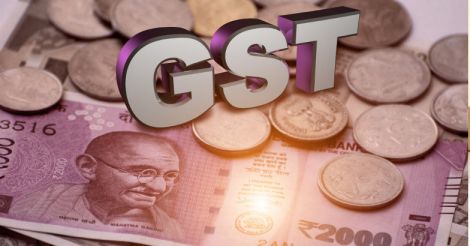The Goods and Services Tax (GST) is India's biggest indirect tax reform since liberalization. The GST, which comes into effect on July 1, replaces a complex set of taxes with a simple nationwide tax structure for most goods and services. There is no clarity yet on many factors and hence, initial hiccups after the GST rollout are expected.
Onmanorama attempts to take a peek into the GST, which aims to unravel the concept of one nation, one tax, one market.
What is Goods and Services Tax?
It is a destination-based tax on consumption of goods and services. The concept is one nation, one tax and one market. In effect, the GST will absorb a host of central and state taxes.
Which other countries have implemented a tax structure akin to GST?
More than 150 countries have adopted a similar tax structure. Brazil and Canada are the only countries, which follow a dual tax structure, in which central and state GST are levied. India's GST structure is roughly modeled on the lines of Canada.
What commodities have been exempted from GST?
Alcohol, petroleum products, natural gas, aviation turbine fuel, and electricity. The existing tax system will continue for these commodities.
What is the status of tobacco and tobacco products?
Tobacco and tobacco products would be subject to GST, but the central government retains the right to levy central excise duty on these.
What are the different GST tax slabs?
There are five tax slabs – 0/5/12/18 & 28 – in GST. These are some examples.
I: No levies
Goods: Fresh meat, fish, chicken, eggs, milk, butter milk, curd, salt
Services: Hotels, lodges with tariff below Rs 1,000
II: 5%
Goods: Apparel below Rs 1,000
Services: Rail, air transport
III: 12%
Goods: Apparel below Rs 1,000
Services: Govt lotteries
IV:18%
Goods: Footwear costing more than Rs 500
Services: Air-conditioned restaurants serving booze
V: 28%
Goods: Bidis, pan masala, shampoo
Services: Private lotteries
What are the benefits envisaged for the country by rolling out GST?
By amalgamating a slew of central and state taxes, the GST is ultimately envisaged to pave the way for a common national market. The single biggest gain for consumers is the reduction in overall tax burden on goods. The GST is also expected to make the country's products more competitive in domestic as well as international markets. Increase in trade volumes is expected to spur economic growth. Improved tax compliance is another expected gain. Though GST is expected to make tax administration easier, initial hiccups are not ruled out mainly due to the complex structure of taxes.
What are the structures of GST to be implemented?
The Center and states would be simultaneously levying GST on a common tax base. The center would levy GST on intra-state supply of goods and services. It would be called Central GST. The levy by states on intra-state supply of goods and services would be State GST – this would be applicable only when both the supplier and recipient are located in the state. The Integrated GST will be levied and administered by Centre on inter-state supply of goods and services.
Who are the members of the GST Council?
The union finance minister and finance or taxation ministers of states are the members of GST Council.
What is the role of GST Council?
The GST Council would make reconsiderations on the taxes, Cesses and surcharges are to be levied by Center and states under the GST. It would also make recommendations on goods and services that are to be included or exempted from GST.
How is the decision making process in GST Council envisioned?
A 3/4th majority of members present would be needed to take any decision. The central government has a weightage of 1/3rd of votes and the combined weightage of the state governments would be 2/3rd. At least half the number of members should be required to constitute a quorum.
What are the principles adopted for identifying various taxes to be brought under or absorbed by GST?
Taxes to be absorbed (subsumed) by GST are primarily indirect taxes on supply of goods or services. Indirect taxes are those levied on seller of goods and provider of services, which are ultimately passed on to the end consumer. Direct taxes are taxes levied on income of an individual. The basic concept of GST is to facilitate free flow of goods and services while also balancing the revenue share of the Centre and states.
What are the central taxes that are to be absorbed by GST?
Taxes currently levied and collected by the Center to be absorbed by GST are:
» Central-excise duty
» Duties of excise on medicinal and toilet preparations
» Additional duties of excise on goods of special importance. (Some hoods of special importance as per Central Sales Tax Act are paddy, rice, wheat, bajra, iron and steel, jute and crude oil)
» Additional duties of excise (textiles and textile products)
» Additional duties of customs
» Special additional duty of customs
» Service tax
» Central services and Cesses related to goods and services
What are the state taxes that the GST would absorb?
Some state levies that would be absorbed once GST is rolled in are:
» State value-added tax
» Luxury tax
» Entry tax
» Entertainment and amusement tax (Except those levied by local bodies)
» Taxes on advertisements
» Purchase tax
» Taxes on lotteries
» State surcharges and Cesses applicable to goods and services

























 Photo: iStock
Photo: iStock
